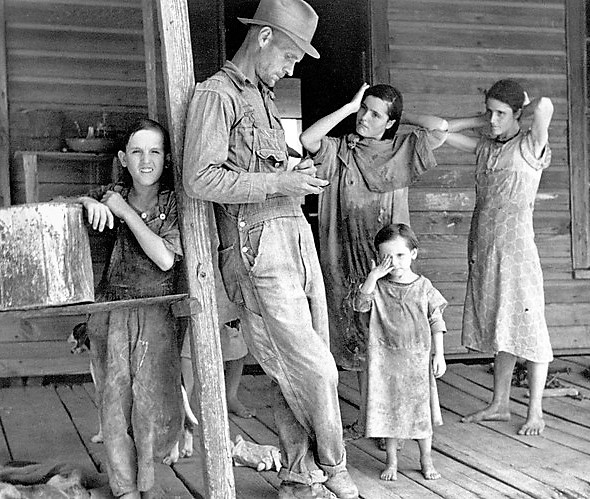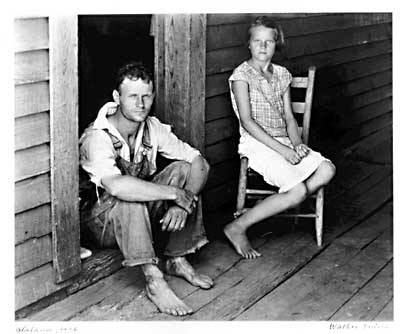Category Archives: Component 1 Personal Investigation
Filters
Photobook Specification
Narrative: What is your story?
Describe in:
- 3 words: Folklore, Reality, Fiction
- A sentence: Exploring the occupation of folklore tales of a small collective place
- A paragraph: My phonebook will look to explore the occupation of local myths and folklore tales in Jersey, Channel Islands, ones that play and important part in the islands history as well as tourism. Using tableaux photography I will be exploring the boundaries between fact and fiction, using the factual locations with stage, fictional actions.
Design: Consider the following
- Format, size, orientation: I am choosing to go with a standard A4 20x25cm portrait orientation, I have chosen portrait as I want the allowance to be able to create impactful double page spreads and portrait orientation works best for this I feel. The standard size means I can keep it not overly large and abnormal, as the context isn’t too normal this allows the book to create a sense of reality and normality juxtaposing its contents.
- Binding and Cover: I am choosing to use a hardback cover using an image wrap. I feel I can create a larger impact by having a full bleed double page image wrap rather than smaller images or a plain cover. With regards to binding I will have a saddle stitch, hidden by the cover, the simplicity I feel will help to not distract from the narrative
- Sequencing: I am planning to move from one narrative to another, to do this I plan to use a starting image and keep a steady sequence going of mixing double page spreads and individual smaller photographs.
- Title: I am looking to make my title something surrounding fantasy, I am thinking of using “A Flight of Imagination” – a different way of talking about fantasy in a way which I feel is more mysterious and intreeging.
Photographic Responses: Photoshoot 3 – Post 1 (Contact Sheet)

Essay Draft 3
To what extent can we trust documentary photography to tell the truth about reality?
“The process of manipulation starts as soon as we frame a person, a landscape, an object, or a scene with our cameras: we choose a portrait or landscape format” (Bright, S. and Van Erp, H. 2019; 18)
My personal investigation looks at my grandparent’s lifestyle and how it has been influenced by the time period they grew up in, the 1940’s. I have explored the influence of religion and spirituality, gender roles within the family structure and social norms during this time period which are still present in their lifestyle to this day. Holding strong connections with my grandparents led me to want to base my project on them, as I know I will be able to easily retrieve useful insight into their lifestyle, enhancing the imagery I produce, on top of forming a piece of work in which my family will cherish. In this essay I aim to discuss the extent to which documentary photography accurately portrays reality, with reference to two documentary style photographers, Latoya Ruby Frazier and Walker Evans. In this essay I will be referring to Walker Evan’s photographic series entitled ‘Let Us Now Praise Famous Men’ (capital letters on title) and Latoya Ruby Frazier’s photographic series ‘The Notion of Family’. Analysing photographers who captured imagery in two different periods of time, contextual and contemporary comparison, allows me to illustrate whether the reliability has changed overtime or stayed consistent, providing a valid argument.
The art movement of realism and straight photography looks at creating imagery which showcase life how it is, this emerged in the 1840’s. Artists who work within this area look at raising social and cultural issues relevant within society at that time, in order to make the audience aware of this issue in hoping something can be done to make a change. This area looks at documentary photography and photojournalism to document the events which are occurring. Artists stick to the original techniques and purpose of photography, the use of photography for science, to create detailed, sharp images showcasing real life. Henry Fox Talbot created the calotype, which is said to be the basis for how photography is practised today in documenting everyday life. The calotype was done by creating a paper negative, exposing a sheet of paper coated with silver and chloride to a light source. His photographs used a short exposure time and allowed multiple prints to be produced through one negative. He believed that photographs were the cause of light, the influence of nature, on a paper negative and is illustrated through optical and chemical means. Artist Louis-Jacques Mandé Daguerre, also shared this ideology behind image making and stated that photography “consists in the spontaneous reproduction of the images of nature received in the camera obscura, not with their colors, but with very fine gradation of tones.” (Daguerre Mandé 1838: page no – if known?). This illustrates how this art movement allows nature to present itself showing the reliability of imagery, which is then contradicted as it states its a spontaneous reproduction suggesting the accuracy of the imagery is reduced. Artist Frederick Henry Evans’ ‘A sea of a step’ clearly presents realism through the composition and use of the formal elements of light and space. Conceptually, the imagery portrays the climbing up the stairs, as if the stairs lead towards a euphoric feeling. “He drew on the Symbolist manner of using objects to directly express esoteric ideas.” (The Art Story – need help referencing this please – okay, where did you get this quote from?). This use of symbolism creates a subjective perspective reducing the reliability of this art movement. Paul Strand took a different approach to capturing objects, using a macro technique with clear focus on light and shadow and the contrast between the two in order for the work to “be brutally direct; devoid of all flim-flam; devoid of trickery and of any ‘ism’; devoid of any attempt to mystify an ignorant public, including the photographers themselves.” (need help again referencing). This suggests how Strand’s work produces a more objective narrative which clearly depicts reality illustrating how this art movement can be truthful. Looking closely towards documentary photography, a style of photography which places into this art movement, artist Walker Evan’s and Latoya Ruby Frazier use portraiture to showcase the lifestyle of the subjects presented in the frame in their natural environment, somewhere familiar to them that they have a relationship with, but to what extent does these photographers accurately portray the subjects lifestyle? With my topic being based in my grandparent’s lifestyle, I felt that using a documentary approach to photography would be the most appropriate to showcase this, as well as the project looking at social issues of family structure and gender roles being raised, thus drawing connections with realism and straight photography.
Comments: This paragraph provide a good historical overview of the origins of photography and its relationship with reality. You need to comment on photography inherent inability to represent truth as the act of photography is always subjective and artifice ie. the person behind the camera decided where to point the camera. And, the photograph itself is only ever a representation of a reality. I will try and think of a relevant essay fro you to read that questions photography and veracity seen from a postmodern perspective – I will email or send an online link via comments on the blog.

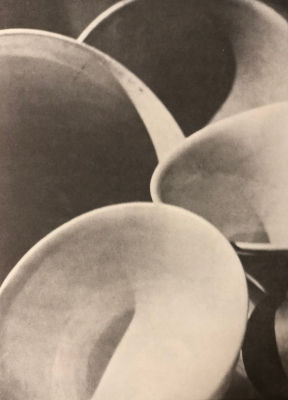

Walker Evans – 1936 – Allie Mae Burroughs
Walker Evan’s ‘Let Us Now Praise Famous Men’ photographic series explores the exploitation of Tenant farmers in Alabama during the Great Depression, through the medium of documentary portraits. With close analysis to the ‘Allie Mae Burroughs’ produced in 1936, the portrayal of the narrative clearly illustrates the dire conditions to which these families are subjected to, and draws upon the ideology that they do not know life any differently to the life they live now. “The essence is done very quietly with a flash of the mind, and with a machine. I think too that photography is editing, editing after the taking. After knowing what to take, you have to do the editing.” (Evans 1971 : page no – if known?) – Evans suggest that although his photographs are trying to capture reality, manipulation of capturing or editing still effects the photographs and the way in which it truthfully presents the Tenant’s pejorative lifestyles. In an article, published by the Guardian, the author describes Evan’s imagery to accurately present reality, “You can’t sniff the stink of the quilts in the Evans pictures, nor itch with the lice in the pillows. The foul beds take on a Shaker dignity of form. A gasoline pump on the porch of a post office metamorphoses into sculptural permanence within the fixed focal length of Evans’s lens.” (author ?? 2001 : page no – if known? ). His positive critique to Evans’ imagery emphasises how accurately he managed to capture the raw living environments of the tenant families, which allows viewers to sympathises for these families, as we understand that they do not know life any differently, which contradicts the viewpoint of Evan, but who are we to believe more? Simplicity in the composition allows an accurate reliable source to be illustrated. Evan’s subject is placed in the centre of the frame, and using naturalistic lighting he captures the subject gawking into the lens as if they are asking for mercy. He captures the subject in their naturalistic environment allowing the authenticity of his imagery to be upheld, and allows reinforcement for the sympathetic connection to be between the subject and viewers. Technically, he uses a large depth of field, due to the whole frame being in focus, suggesting a small aperture and slower shutter speed. It is recorded that Evan has four different variations of his ‘Allie Mae Burroughs’ which reduces the reliability of his work, due to manipulation of his subject in each image, which can lead to us not fully conforming to believe in this social implication, as it not being a reliable source due to several versions of the same image, with only one outcome being used. In my response, I captured my Grandparents outside of their homes, in locations where they spent the most time when outside, or the areas in which they felt illustrated their lifestyle. Similarly, using a small aperture and slow shutter speed, I used a tripod in order to produce detailed and well structured portraits. The natural light source from outside and naturalistic environment, allowed me to maintain the authenticity of my imagery allowing for a reliable source presenting my Grandparents lifestyle. In terms of concept, I captured my photographs mainly outside using simplistic backgrounds illustrating their lifestyle, but I also decided to explore this connection of subject and location with the interior of my Grandparents house, as they spend more time inside than out.

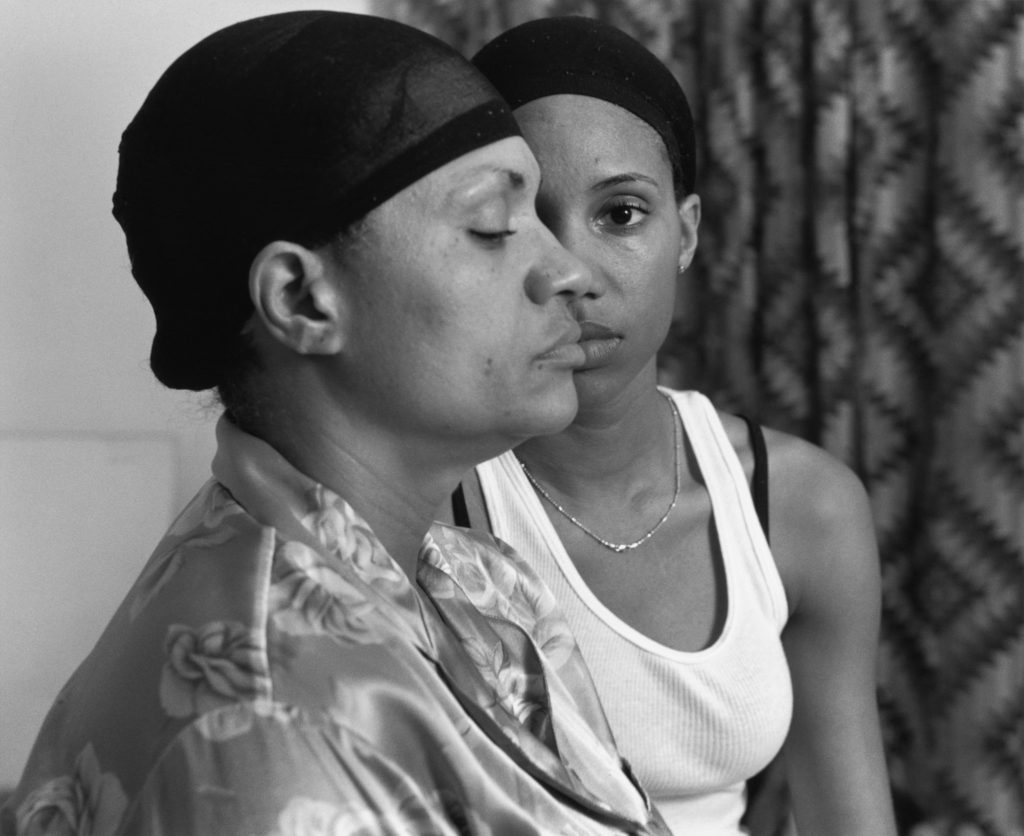
Bibliography:
Bright, S. and Van Erp, H.(2019), Photography Decoded. London: octopus Publishing House
Louis-Jacques Mandé Daguerre.(1838), Louis-Jacques-Mandé Daguerre. photoquotations: http://photoquotations.com/a/171/Louis-Jacques-Mandé+Daguerre
Rule, V. (2001). Review: Let Us Now Praise Famous Men by James Agee and Walker Evans. [online] the Guardian. Available at: https://www.theguardian.com/books/2001/aug/18/historybooks.highereducation [Accessed 15 Jan. 2020].
https://www.theartstory.org/movement/straight-photography/
https://www.photoquotes.com/ShowQuotes.aspx?id=196&name=Evans,Walker
Photo Shoot 5 – Walker Evans Inspired
Planning:
After my close analysis to the work of Walker Evans, I decided to conduct a photo shoot which captured my Grandparents lifestyle, by presenting their narrative through their outfit and emotion through facial expression, like Evans’ imagery of Allie Mae Burroughs. I intend to capture a lot of this imagery outside, using the exterior of my Grandparents house in order to make close contentions with his work and also plan to take a few (not many inside) to experiment with this technique and whether it will withstand the same conceptual representation as it would if the photographs were taken outside. Prior to this shoot, I contacted my Grandparents and asked them to wear an outfit which they believe showcases themselves and their lifestyle. In addition, I asked them to choose areas of their house, outdoor and indoors, which they spend the most time in and feel most comfortable in, which will allow the naturalistic documentary photography to accurately depict their reality. With regards to my camera, I intend to use my DSLR, utilising a quick shutter speed, low ISO, and experimenting with the aperture to add depth of field, and dependent on the natural lighting provided.
Edits:

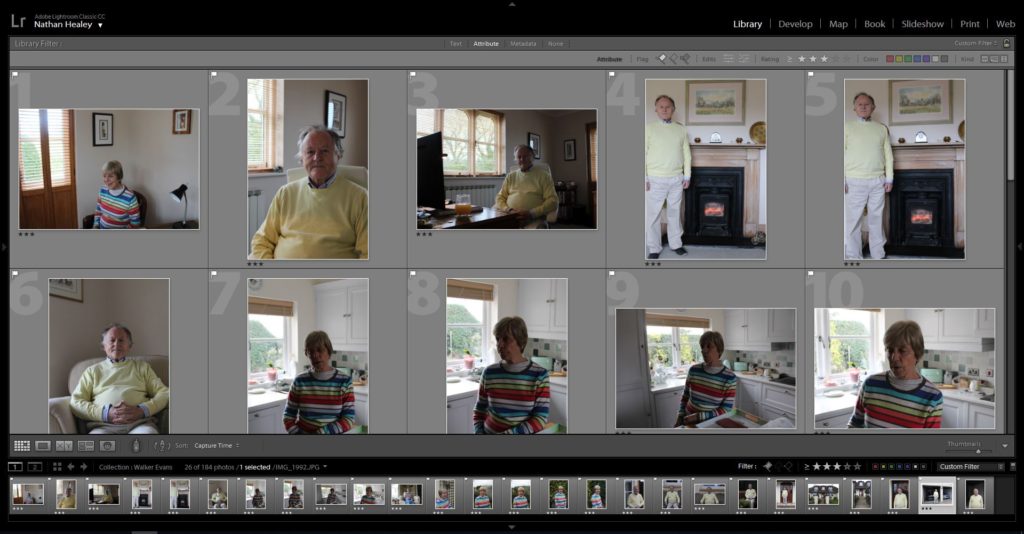

Outcomes:
In respect to editing my outcomes from this photoshoot, I wanted to produce final imagery which held the stylistic features of Evans’ work. In order to achieve this I made all of my outcomes be presented in black and white, and looked at creating high tonal contrast to allow facial features to help express and convey the lifestyle in which my grandparents live in. To achieve this I looked at adjusting the contrast, structure, blacks whites and shadows in order to achieve this intended effect. My final selection are images which I believe have the same simplistic composition, but still holds strong conceptual and contextual representation, about the life my grandparents live and providing information about how they achieved this lifestyle, which is further explained in my photograph analysis.






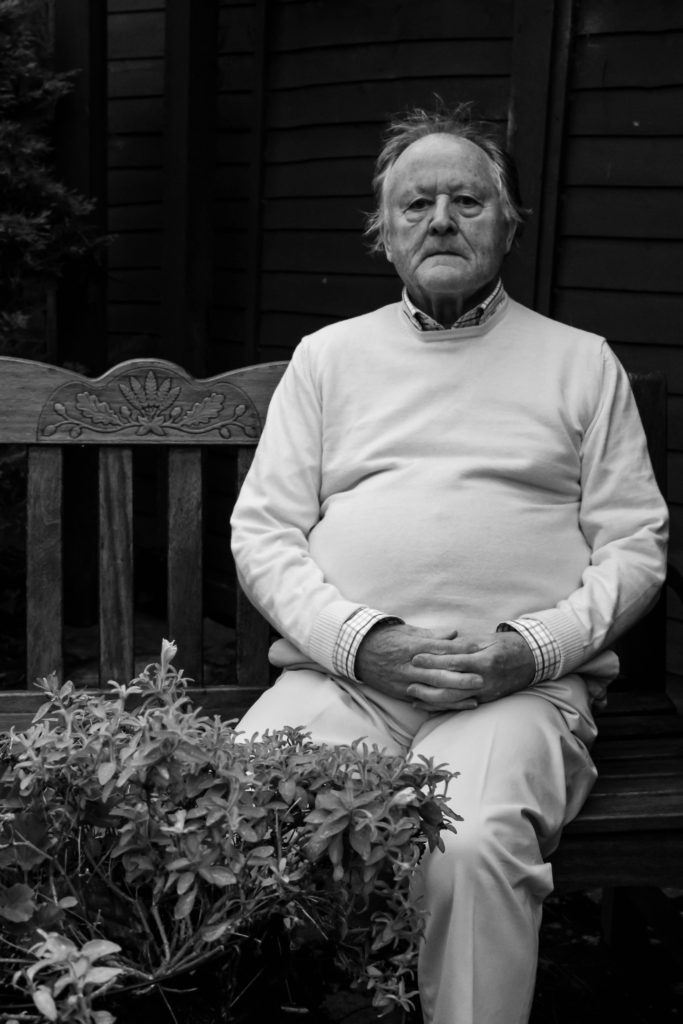


Analysis:
The two photographs below is my photograph which has taken inspiration from Evans’ imagery, which I believe shows my understanding and application of Evans’ photographic technique. The framing of the two images are very similar, both present the subject in the foreground, with the background being wooden and simplistic, not distracting the viewers. Similarly, both images are presented in black and white with high tonal contrast, which has allowed the detail and structure of the subjects to clearly stand out to present conceptual representation. In addition, the methodology used to capture both photographs share a lot in common, with a low ISO being used, a quick shutter speed, low aperture due to no significant depth of field, and natural lighting being utilised. Comparing the two images visually, my image shows more structure and detail, which allows a warmer atmosphere to be presented holding ameliorative connotations, which contrast Evan’s image which is a lot more smooth and naturalistic which holds a cold atmosphere, creating pejorative connotations. Along side this, the outfits of the two models are different as it clearly shows two different socio economic status of two people, and showcases their lifestyle.
Conceptually, Evan’s captured Tenant Farmers in Alabama, and their lifestyle through portraits of different families. Where as I have captured my Grandad in order to present his life story, from when he was younger working in finance and making his fortune to be able to live his wealthy and happy lifestyle now a days. Contextually, the subjects in Evans’ imagery had low income and would not be able to change their lifestyle due to their situational factors. Where as, I contextually presented Jersey as a finance institute which holds the most income on the Island, it also shows how my Grandad worked in this field as he know he could make a lot of money for it in order to afford this lifestyle later on in life.

My Imagery 
Walker Evans – Allie Mae Borrough
Conclusion:
To conclude, I believe I have reinforced my ability to produce photographs which take on the stylistic features of another artist. In addition, I have also been able to apply similar conceptual representations within my work as another artists, which shows my ability to apply different elements of artists work through my understanding of their methodology. I have been able to explore capturing my subjects in a different environment, which presents them in a new ‘limelight’. Technically, I have shown my ability to capture portraits in an outdoor environment, and have again reinforced my ability to capture high quality portraits. I believe this photo shoot has been successful as I have been able to produce high quality imagery which clearly showcases lifestyle in the stylistic way of Walker Evans.
Artist Reference – Walker Evans
Walker Evans – ‘Let Us Now Praise Famous Men’:
Walker Evans is an American photograph, who influenced the evolution of ambitious photography during the later 20th century. His imagery looks at creating a poetic resonance, which describe the subject presented within the photograph. He is said to be the first photographer to produce a photo book to present his photographic responses, entitled ‘American Photographs’. His work challenges social issues, through the style of documentary photography, this element is clearly shown within his photographic series ‘ Let Us Now Praise Famous Men’.
Mood Board showcasing Walker Evans’ imagery from his photographic series ‘Let Us Now Praise Famous Men’
Conceptual and Contextual:
Let Us Now Praise Famous Men, is one of Walker’s most known photographic series which was started in 1936, captured imagery for 5 years, and the photo book being published in 1941, in which he teamed up with American author James Agee to create an embodiment of work which documents the lifestyle of Tenant Farmers in Alabama during the Depression era. For contextual reference a tenant farming is a form of agriculture, in which a land owner with contribute their land on measure of operating capital and work, while the tenants contributes their labour, with the return being given in a variety of ways. The return can be, a share in the produce, cash or a combination of both. This is only said to be 5% of the agriculture, making these subjects a minority in society and within the industry, thus create more captivating imagery showcasing their lifestyle. Sadly, this form of work can lead to abuse when the landowner has to much power, or inferior social status. Initially, the project was to capture white cotton farmers in South America, but the focus soon changed after a lack of subjects being found, the new idea of tenant farmers formed after the two lived with three tenant family farmers. The families lived with no electricity or running water, and have lived this life style since their childhood.
“Let Us Now Praise Famous Men harkens back to a time when millions of Americans lived a truly subsistence existence, and their families were the one buttress against an eternal winter of silent despondency.” (Ingram.B, 2014) In a review article which analyses the book written by James Agee, with comments on Evans photographer, the author wrote about how the imagery Evan produces allows the clear narrative to tell the story of the lives of the three tenant farmer families. “Evans was a preeminent photographer of his time, and his almost stark work here is the perfect foil for Agee’s” (Ingram.B, 2014). Evans’ photographs within this book has pleased many critics as the images illustrates the imagery created by the word produced by Agee.
In another article, published by the Guardian, the author describes Evan’s imagery to present reality, “You can’t sniff the stink of the quilts in the Evans pictures, nor itch with the lice in the pillows. The foul beds take on a Shaker dignity of form. A gasoline pump on the porch of a post office metamorphoses into sculptural permanence within the fixed focal length of Evans’s lens.” (Rule.V, 2001). His positive critique to Evans’ imagery emphasises how accurately he managed to capture the raw living environments of the tenant families, which allows viewers to sympathises for these families, as we understand that they do not know life any differently. As previously mentioned it allows our imagination from the novel, written by Agee, to visually see and understand this reality, making the stories more real and empowering. The author also mentions how Evan’s photographs “beatifies, the bemused children of poverty more than any adjective or adverb Agee might edit out of his copy.” (Rule.V, 2001). This illustrates how the images within the photographic novel holds stronger representation of the lives of the tenants than the story itself, as words are not powerful enough to describe these conditions. In addition, he is referring to the idea that the images are being beatified, which informs us that the photographs are captivating and have the authenticity which makes the images seem beautiful, which juxtaposes the negative connotations the images actually hold.
Technical and Visual:
The double page spread presented below is one of the most famous page spreads form any of his photographic books, and is taken from his series ‘Let Us Now Praise Famous Men’. I believed that these two images held a lot of visual and technical value which allow me to critically analyse Evan’s work in order for me to describe the way in which his conceptual representations is presented.

Walker Evans – Let Us Now Praise Famous Men
Visually, the two documentary style portraits are minimalistic, in the sense that the frame has a lot of space, which depicts the conceptual representation of their basic and hard lifestyle they live, and shows how they have nothing. The photographs are two headshots taken at a straight on angle of a male and a female, to which I believe are husband and wife, which are the main focal points of the image. The clothing they are wearing suggests a lot about their low social status, their shirts seemed creased, and through the image being in black and white and high tonal contrast, we can see how soiled these subjects are. Their facial expressions are neutral, but their strong eye contact towards the lens almost suggests they are asking for help, and illustrates their pain and suffering. The background of the images are just their natural environment, which seems to be a wall or apart of their small wooden cottages. With regards to the formal elements, texture, space, tone and form, help to illuminate their poor living conditions, and adds to the authenticity of the naturalistic imagery, creating sympathy for viewers.
Technically, the photographs use basic camera settings, which shows how the time period of the photographs being taken, 1936, has influenced the outcomes. It is suggested that naturalistic lighting has been used to capture these outcomes, which means a daylight white balance would have been used, which juxtaposes the cold ambiance the images hold, also emphasising the pejorative connotations towards this imagery. The photographs have a grainy look, which shows the contextual element of the time period and could suggest how a high ISO was used in order to capture the images. In addition to this a quick shutter speed was likely to be used, as well as a medium aperture due to a slight depth of field being used and the imagery being having a darker tone towards it and the subject being in clear focus and sharp.
Action Plan:
Moving forward I intend to conduct a new photo shoot which looks at capturing the lives and lifestyle of my grandparents, and try and illustrate how the working lives have resulted in the lives at present. I intend to capture imagery outside, as that is mainly were Evan’s images were taken, which allows me to explore the relationship between my Grandparents and their exterior of their house. In addition, I look to create a selection of portraits which express this conceptual representation, through the images being in black and white, high tonal contrast and strong connection with the camera lens.
Bibliography:
Ingram, B. (2014). ‘Let Us Now Praise Famous Men’ by James Agee and Walker Evans. [online] Broadstreetreview.com. Available at: https://www.broadstreetreview.com/books/let-us-now-praise-famous-men-by-james-agee-and-walker-evans# [Accessed 15 Jan. 2020].
Rule, V. (2001). Review: Let Us Now Praise Famous Men by James Agee and Walker Evans. [online] the Guardian. Available at: https://www.theguardian.com/books/2001/aug/18/historybooks.highereducation [Accessed 15 Jan. 2020].
Understanding Photo book Design
Sam Harris – The Middle of Somewhere:
Sam Harris is a British photographer who lived in London, his first apart in the city was turned into a makeshift darkroom were he explored and experimented with photographs. During the 90’s his passion played with capturing portraits and sleeve art for recording artists. Later on in life himself and his family moved to Western Australia for a more simplistic lifestyle, where he photographic book ‘The Middle of Somewhere’ was produced, 2015.
Narrative:
‘The Middle of Somewhere’ is a photographic book which is visual family diary, celebrating childhood, family and love. The book is based around Harris’ two daughters as they move to Australia. The imagery explores the transformation of his daughters, in particular moments of time as they are able to experience freely and wonder in their surroundings. The phonebook covers a 12 year period, as they move after seeking a simpler lifestyle. The images tend to be in naturalistic environment using naturalistic light sources which allow for the ideology of exploration and children growing up to further be emphasised. Inserts are placed within the book which allows for a descriptive perspective of this journey of the girls to be showcased. Overall, the final product is intimate and embraces a memorable collection of images which tells the story of two daughters growing up.


Deconstruction:
- Book in hand: how does it feel? Smell, sniff the paper.
The book itself feels quite heavy, the front cover is smooth, with a white fabric taped across the front with the title of the photo book on top of it. The book smells used and reminds of walking past books in a library.
- Paper and ink: use of different paper/ textures/ colour or B&W or both.
All the images, whether they are in colour or black and white, are placed onto white matt paper which is smooth and reminds me of a photo scrap book which families hold their images in. Inside the book their is also text, which is stuck in on post it notes, which are all hand written, explaining or further reinforcing the girls exploration into the world. In addition, a written diary, typed in a newspaper font is used, which adds context about the moving process from the perspective of Harris
- Format, size and orientation: portraiture/ landscape/ square/ A5, A4, A3 / number of pages.
The photo book is presented in a portrait orientation, which is slightly larger than A5 but not quite A4. The shape of the book is rectangle with no vertices, as the corners are smooth and curve. In total there are 94 photographs, 2 inserts, 48 photographs, post-its and notes.

- Binding, soft/hard cover. image wrap/dust jacket. saddle stitch/swiss binding/ Japanese stab-binding/ leperello
As mentioned previously the book is a soft cover, with no dust jacket and no image wrap. The binding is a saddle stitch, as we are not able to see how the book is put together. However with the inserts they are put into the book using a Swiss stitch, which adds to the scrap book feel and almost creates child like qualities.
- Cover: linen/ card. graphic/ printed image. embossed/ debossed. letterpress/ silkscreen/hot-stamping.
The cover itself is a piece of soft card, with a green background. On the background is yellow spirals, which is symbolic for the simplistic life that this family have moved on to. These drawings are also ‘basic’ which suggests that the two daughters drew the covers. In a sense you can feel these yellow spirals, creating a slight texture to the front cover. As mention prior, the title is placed on a white piece of fabric, with the title hand written onto the white fabric.
- Title: literal or poetic / relevant or intriguing.
The title used takes a more poetic route to suggesting what the book is. ‘The Middle Of Somewhere’, is Harris’ was of explaining how he moved from London to remote corner of the world, in order to live the simplistic lifestyle, which is also emphasised through him not naming where he has moved to. It also hints at the ideology that his daughters are free to explore and grow up without having to worry, as he is no longer living in a major city. Personally, the title is both intriguing as it makes viewers want to fully understand the context and concept of the book, but the title also has relevance to his imagery that he produces.
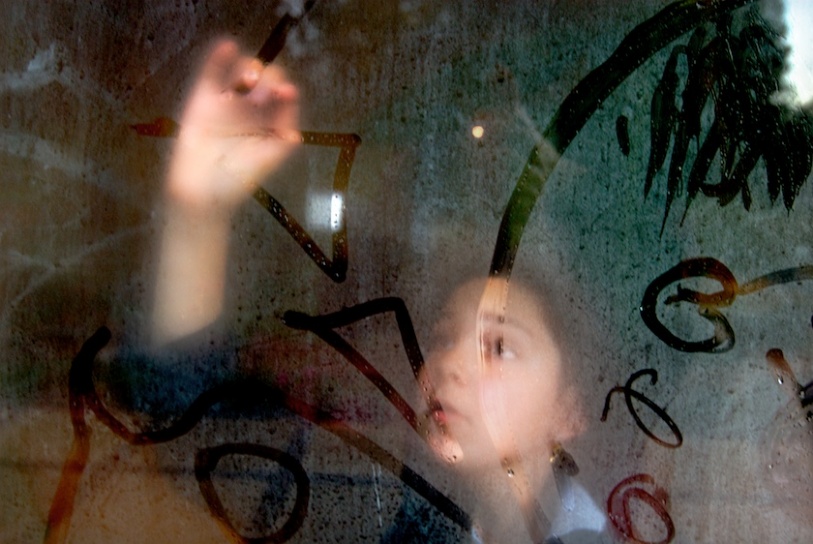
- Narrative: what is the story/ subject-matter. How is it told?
As mentioned in the narrative section of the blog post, the book explores Harris’ two daughters growing up and exploring the world after they move to Western Australia for a more simplistic lifestyle. The image is told through the naturalistic, documentary style photographs, both portrait and landscape, which allows viewers to visually understand their new lifestyle and the way in which his daughters are growing up and experience the world. This is reinforced through the travelogues within the book, which allows text to qualitatively describe this lifestyle, complimenting the imagery, as well as post-its of different messages the children have written, which also compliment the imagery.
- Structure and architecture: how design/ repeating motifs/ or specific features develops a concept or construct a narrative. Editing and sequencing: selection of images/ juxtaposition of photographs/ editing process.
The construct of the photo book is simplistic, when two images are presented over two pages, the images tend to match in location and through the formal elements of colour, which allows the viewers eyes to easily guide themselves around the book. The larger images represent the key or more substantial moments through the children’s exploration. All the photographs within the photographic book, all have a connection in the sense that they are all naturalistic, and taken in an environment in which the girls feel safe in and call home. The way in which they are sequenced, is in a chronological order in order to show the children’s age and them growing up, emphasising how they have developed and changed into the simplistic lifestyle, as well as showing how their personality has changed through exploration of the area they live in. The first image presented is a landscape of a forest area in which I believe is the place in which his daughter’s are growing up in, which allows a circular plot with the ending image being a sketched map of this specific area.

- Design and layout: image size on pages/ single page, double-spread/ images/ grid, fold- outs/ inserts.
Most of the book, the landscape photographs are presented on a double page spread, with an occasional 3/4 page spread, and half of a single page spread.. The portrait pictures are consistently single page spreads. Each photograph compliments one another and allows the narrative to smoothly flow throughout. The inserts within the book is the travelogues which are all text, with one of them having a few black and white images, which are all clumped together summarising the text in a visual way.
- Images and text: are they linked? Introduction/ essay/ statement by artists or others. Use of captions (if any.)
At the beginning of the photo book is a series of 7 short sentences which describe how time goes quickly and how his daughters are growing up so fast, which allows us to consider the conceptual representation of the book. On top of this, as I have previously mentioned the book has travelogues, as inserts, which descriptively explain their new lifestyle, which almost acts as an explanation for the imagery. On top of this, post-it notes are found within the book which helps to explain a specific image and that specific moment, adding context to the imagery.
Video:
Below I have found a video which shows every page of the photo book, which will help to reinforce the comments I have made and illustrate some of the features I have outlines:
Understanding Photo-Book Design:
In order to get a better understanding of the process of designing and creating a book, I have found an already produced photo-book, and took inspiration from it in terms of the ways that books can be edited together, sequences and designed.
For this, I chose to study the photo-book titled “Redheaded Peckerwood” by photographer Christian Patterson.

Book in Hand: the book is very slightly textured, however the front cover gives the illusion that it is much more textured than it is in reality. I found this interesting, as I had to spend some time deciding whether the cover was in fact smooth or textured, as the cover photo itself acted as a slightly illusion
Paper and Ink: the book makes use of the same smooth photo-paper throughout, with the exception of a number of handouts/pullouts (such as letters, postcards and small leaflets with writing on). The images in the book are both colour and black and white, although there is a larger number of coloured images.
Format, size and orientation: the book itself is presented in portrait, however the images inside are both landscape and portrait. The overall size of the book is slightly shorter than A4, and includes around 100 pages of images (a d around 5 inserts).
Binding, soft/hardcover: the image is a hardcover book, with case binding used to bind the pages together. The book is without a dust-jacket.
Cover: the front cover is made of a card material, and includes an image of 2 subjects smiling and facing the camera. These subjects have been obscured using a grey, pixelated filter, acting as a shroud over the image, as to reduce the detail available to the viewer, and to obscure the image. The front cover does not include the photographer or the title of the book (these are only included on the spine of the book.
Title: the title “Redheaded Peckerwood” derives from the derogatory, slang name for white, lower class individuals living in the South of the USA. The title is most likely used as a derogatory term for the murderers, who are presented as important subjects in the book.
Narrative: the subject matter of the book is the murder case of 11 individuals by 19 year old Charles Starkweather, and his 14 year old girlfriend Caril Ann Fugate. During the later years Starkweathers childhood, he began to develop aggressive tenancies and anger problems. Starkweather eventually became involved in a dispute with a petrol station attendant named Robert Colvert, who Starkweather eventually shot and killed. Both Starkweather and Fugate then proceeded on a violent rampage, murdering 11 individuals including both parents and the younger sibling of Caril. The book itself follows the story of the killings, using both archival and staged images to slowly hint and give clues to the reader as to the sequence of the murders as the book progresses. The narrative of the book follows the story of the murders themselves, and uses more abstract and conceptual imagery to depict the process of the police, the murderers, and the community as the rampage unfolded.
Structure and architecture: the book follows the structure of focusing on the environment of the community in which the murders occurred. The book becomes progressively more detailed in the clues it gives, with the beginning half focusing on the context of the murders, and the images becoming more and more detailed in the second half of the book, focusing on specific objects, details, people and letters that relate to the crimes committed.
Design and layout: the inserts inside the book are the most unique feature. These inserts include letters (written and typed), postcards and documents. These inserts help to add to the narrative of the book, and moves the story along. The images in the book are rarely full-bleed, and instead sit in the centre of each page, with a white boarder around the edges. There are no double page spreads, although many of the images on opposite pages compliment each other in terms of their composition, colour and structure.
Editing and sequencing: the images seem to involve very little editing, and focus is placed on emphasis of the colour, or changing the image to black and white, rather than physically distorting the image. Overall the only place in which editing is obvious is on the cover of the book, as the rest of the images offer a more scientific and stark documentation of the objects they depict, although the meanings behind the inclusion of these images may be more conceptual. Towards the end of the book, the images begin to compliment each other more and more, with the colours and styles of images included becoming a theme that stretches across a number of pages, before changing again. The overall selection of images has been made to progressively hint more and more obviously at the acts and sequence of events of the murders, although no image is too overt in the way it documents the events. All images are conceptual rather than literal, and therefore the selection of images ranges from images depicting the scenery of the community, to archival images of the murderers themselves (towards the end of the book).
Images and text: the author of the book himself includes very little text, and instead relies on archival evidence of correspondence between the police, the murderers, and letters between the murderers and their family. These documents directly compliment the images they re found among, and help to tell the story without the need for an introduction written by the author, as the first few pages of the book includes the confession letter written by Starkweather and Fugate, setting the scene for the rest of the book. The extracts in the book (including a postcard from Starkweather to his father, and the back of the book contains a leaflet of accounts written by writers, critics, and contemporary photographers regarding the case and their opinions on the photographers work. By using a number of archival writings, critics from other members of the photography community, and the murderers own accounts of events, the author is able to sew together a detailed description of the book and case, while at the same time using very little words of his own.
Photobook Research
Sugar Paper Theories – Jack Latham
Sugar Paper Theories is Jack Latham’s second major project in response to a notorious unsolved double murder investigation in Iceland.
This video interview with Jack Latham helps to explain the circumstances of the case and the photobook that resulted from the work he made in Iceland:
- How might fear and suspicion, a sense of isolation, an unforgiving climate, concerns about cultural changes and deep seated folklore traditions, help to create a situation where innocent people are arrested, questioned, charged and convicted of crimes they did not commit?
- What might have caused those convicted to confess to these crimes? What is Memory Distrust Syndrome and how do people become a victim of it?
- How do we use photographs to help us remember?
- How reliable are our memories? How reliable are photographs as a form of evidence?
Narrative:
Sugar Paper Theories tells and documents the various places and people that feature in various accounts of what happened forty years ago when two men went missing in southwest Iceland. The narrative is told using various new photographs of the places produced by Latham himself as well as archival material of photographs as well as information sheets e.g. newspapers, the narrative is told with each disappearance separately and moving from one conspiracy about each to the other. Using police files he immersed himself into all aspects of the case including key protagonists and sites from the investigation as well as conspiracy theories, forensic science to the notion of Memory Distrust Syndrome, Latham’s project examines issues of evidence and truth, certainty and uncertainty, especially with regard to memory and the medium of photography.

Jack Latham ‘Sugar Paper Theories’
Deconstruction:
Book in Hand: The book is 310 x 230mm and is a soft cover to the touch, a very distinct smell sets itself in the book as the front and back cover are both the material of sugar card and the papers inside consist of sugar paper creating a distinct smell
Paper and ink: Sugar Paper Theories uses various types of paper from sugar paper, held in the title, and a thick matt photo paper, which holds a lot of the colour and archival material depicting specific places or people, the sugar paper on the other hand holds black and white photographs speak across the page into slightly unclear images. It also contains smaller matt pages that are thin they are almost transparent which holds some of the informations as well as the cut down sugar paper inserts.
Format, size and orientation: The book is portrait 310 x 230mm in a rectangular shape, overall there are 46 colour photographs, 37 black and white photographs, 8 illustrations, 9 press cuttings.
Binding: It is a soft cover book with a saddle stitch holding together, there is an image wrap across the front and back cover of a drawing of a potential theory from the case. The spine has a fabric cover over that bleeds around a cm onto the front and back. Bound in the same style as the police case files that Latham
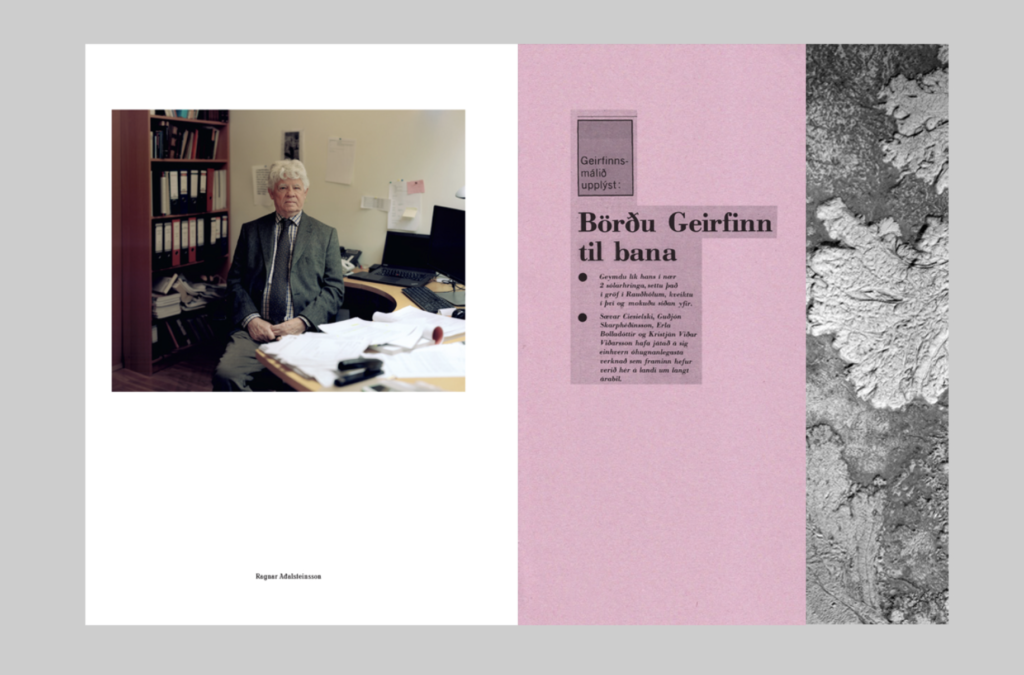
Jack Latham ‘Sugar Paper Theories’ 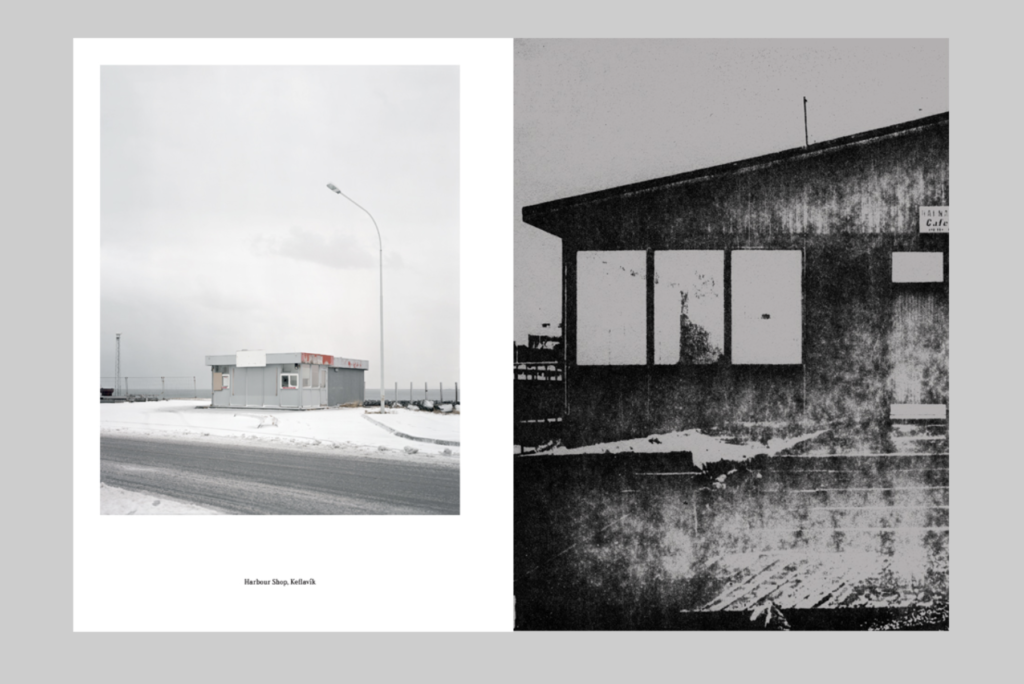
Jack Latham ‘Sugar Paper Theories’
Cover: The cover itself is a thick sugar paper, a yellow tinted colour with a hand drawn image spread across of one of the potential theories in felt tip and biro. Could be from a local citizen rather than a legal investigation theory from the connotations of drawn on sugar paper using green felt tips.
Title: The title of the Photobook is inspired by Latham’s findings while out in Iceland, he found a timeline of events mapped out of sugar paper of a conspiracy theorists desk which eventually inspired the title and cover of the book.
Structure and architecture / Editing and Sequencing: The sequencing alludes to the dubious interrogation technique employed by the police, where they asked questions out of chronological order. Latham uses inserted different sized papers to introduce the elements of police files and evidence, another structure element is the French fold found in the book Latham uses so the reader cannot see the ‘full picture’ developing a sense of ambiguity around what it is or maybe what is going on.
Design and layout: Sugar paper theories leaves near to no blank pages, landscape photographs are often presented on half the portrait pages rather than across the double page and those which are presented larger are folded over with a French Fold.
Images and text: There is no introduction text from Latham however text is used heavily in Sugar Paper Theories, using evidence notes and police files on the inserts, it adds context to some photographs as well as making everything more confusing by showing what was said and found as it was, is, a puzzling case anyway, text is also linked with the photographs to landmark them, names of places and peoples and linking them to the different conspiracy’s≥

Jack Latham ‘Sugar Paper Theories’
Photo shoot 4 – Family Event
Planning:
Christmas is a large event, which everyone in my family looks forward to every year. It is a tradition for my Grandparents to go to church in the morning and then come down to my house at around 12pm on Christmas Day to have a Christmas dinner with us, and exchange presents. The aim of this photoshoot is to showcase how my grandparents lifestyle influences the way in which we celebrate Christmas, due to this day being considered religious celebration. I also want to be able to capture the interaction between my grandparents and other family members, as well as showcasing our ‘traditional’ Christmas. When capturing the pictures I tended to take images of key events, and times within the day, and moments when my grandparents personality is clearly being showcased. The camera settings on my DSLR were kept minimal, allowing for a naturalistic documentary style image to be presented. My shutter speed was quick, with my ISO being low and my aperture also being low, reducing noise, blur and allows enough light into my imagery.
Structure of Christmas:
- 12pm Grandparents arrive – drinks, snacks are presented as we begin celebration.
- 12:30pm Present exchange – We provide a present exchange, gifting each other plants, car air fresheners etc.
- 1pm Dinner – at 1pm we gather round the table, say grace, and open our Christmas crackers as the ford begins to arrive. We usually discuss topics such as work, school, future and how our life is in general.
- 2:30 Dessert – We light the Christmas pudding, and my grandma provides us with her ‘Blue Peter Recipe’, a chocolate cake.
- 3pm Queens Speech – We all gather around the TV as we watch the queen deliver her yearly speech.
- 3:30 Christmas Tree Presents – Each year a member of the family will by a ‘joke’ gift for everyone else and will present these gifts later on in the day.
- 4pm Leaving – My Grandparents leave with their presents, and left over food.
Edits:



Outcomes:
When selecting my outcomes to edit and adjust to improve the quality of the photograph, I wanted to select images which accurately portray the events and the relationship my family have with my Grandparents, and the way in which this tradition reflects their lifestyle. In addition, I critically chose these photographs to work with as I believed that they helped to tell the narrative of this project. When adjusting the images, I wanted to maintain this simplistic and minimalistic aesthetic towards my work, and so I only present the imagery in black and white or in colour, and the I only focused on adjusting, blacks, white, contrast, detail and sharpness of the imagery. These experimentations are clearly presented below.






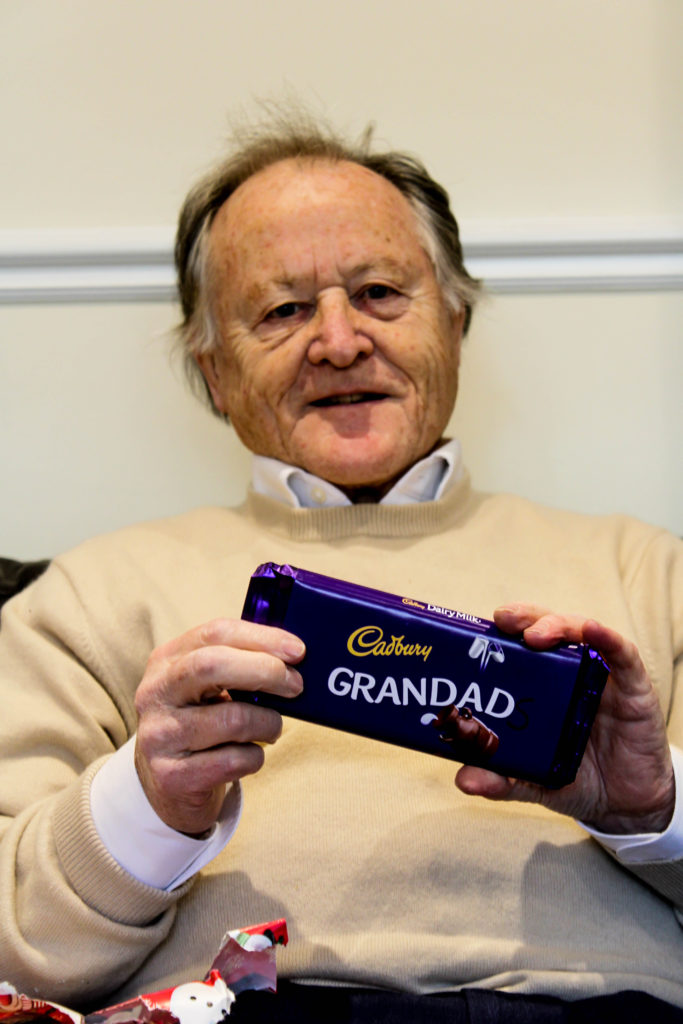





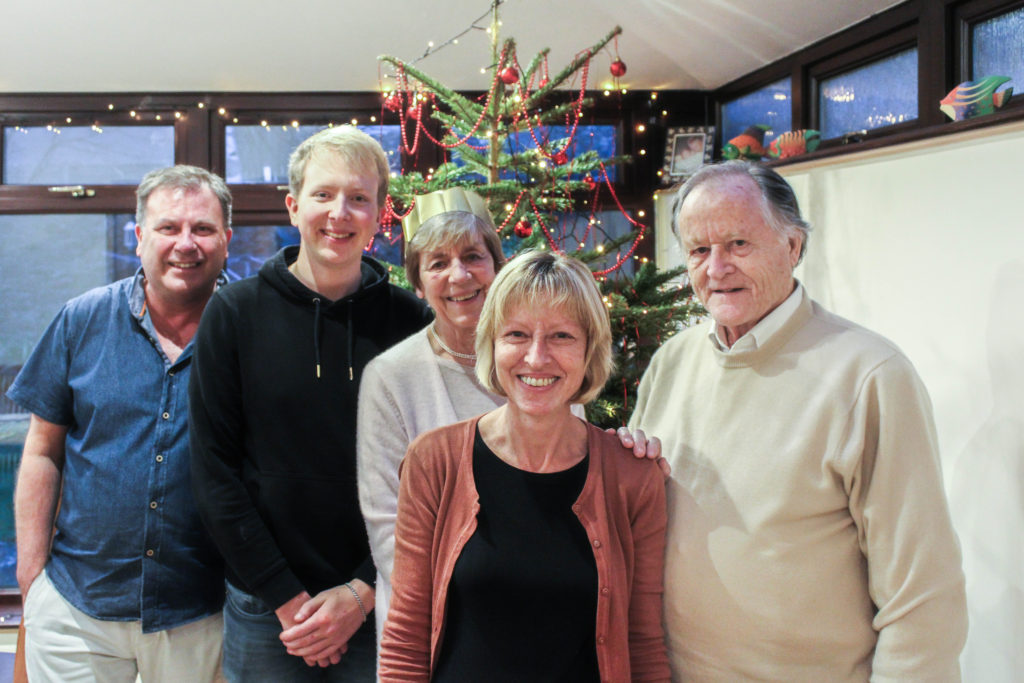
Analysis:
The photograph below is my favourite outcome from this photoshoot as I believe it clearly meets the aims of this photoshoot and clearly presents my theme of lifestyle. Conceptually, this is the moment before food arrives and my family are reading out the jokes from the Christmas crackers. It showcases their reaction to the delivery of the jokes. Typically, my brother does not understand the jokes, like this occasion, and requires people to explain. The photograph shows the bond and strong relationship everyone has around this table, as we follow the family tradition, which illustrates my grandparents lifestyle on a major event like this. Contextually, every Christmas we follow the same schedule and repeat the same day essentially every year. Following this pattern is crucial, as it allows my grandparents Christian religious beliefs to fit in with the day, and allows their grandchildren to follow, understand and practice their beliefs and traditions about christianity. Personally, me and my brother have been christened but do not actively consider ourselves as religious people, so this contextual factor on Christmas influences out day and the way in which we go about activities.
Breaking down the visual and technical components of this image allows for the concept and context of the imagery to clearly be displayed. Visually, we are presented with my family sitting around a table, with Christmas hats on as they laugh and look joyous at one another, making this the main focus point of the imagery. The photograph is presented in black and white, allowing clear tonal contrast, and is taken at a straight on angle. In some respects the photograph can be regarded to be using rule of thirds, to create the composition. Further more, the foreground is considered busy and lively due to a lack of space, with the background remaining plain and simplistic, which reduces distractions from the central focus of this image. The main formal elements which are presented in this frame is, space, detail and texture, which are all shown through the way in which the image has been framed. The photograph is sharp and showcases clear detail on the subjects skin, clothes and the table. Technically, the photograph was captured using and quick shutter speed and low ISO, which reduces intended blur and means no noise is presented in the frame. Additionally, the aperture has been set to a medium setting, as enough light is being let in, and a minor narrow depth of field is being presented. Alongside this, naturalistic lighting is being used, which compliments the daylight white balance being utilised.

Conclusion:
To conclude, I believe that photoshoot has been a success. I have been able to produce imagery which meets my artistic aim, and clearly represents my conceptual message of how my grandparents lifestyle influences the way in which my family celebrate major events. On top of this, I have been able to hint at contextual representations throughout my photographs, which adds additional meaning towards my final outcomes of this photoshoot. I have been able to experiment further with different ways of editing imagery using Lightroom, and have reinforced my skill of being able to critically analyse and select imagery which meet my artistic aim.





